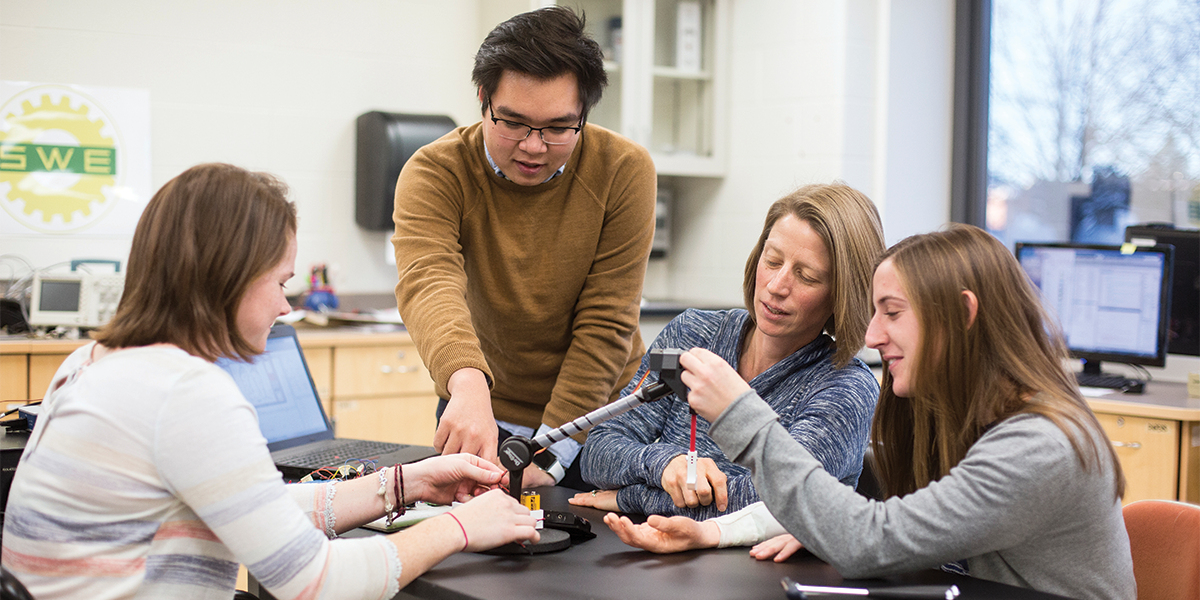Creating New Neural Pathways to Relieve Phantom Pain
Katharine Polasek, Ph.D. | Associate Professor of Engineering
Dr. Katharine Polasek’s mission is to improve the daily experiences of people who have undergone amputations by focusing on a very specific — and very perplexing — challenge: phantom limb pain.
Individuals with phantom limb pain sense pain in the limb that was amputated, as though it were still there. Researchers aren’t yet certain of the cause. To treat this phenomenon and assist the roughly 425,000 patients it affects in the United States (and others elsewhere), Polasek has been developing a variety of novel techniques since 2010, when she started teaching at Hope.
Interested in creating alternatives to medication, Polasek was inspired by mirror and virtual reality therapy. These visual treatments allow patients to perceive their limbs as if they were still intact, so that they can virtually “move” their phantoms to different positions that might decrease the pain they are experiencing. This method, however, doesn’t reduce everyone’s pain, so Polasek is seeking other options.
Assisted by Hope engineering students, Polasek has developed a new, non-invasive therapy to decrease phantom limb pain. To determine its implications, Polasek and her students are preparing to test the therapy on subjects with amputations.
“We are applying small electrical currents to the nerves in people’s arms or legs to make it feel like someone is tapping on their missing limbs,” Polasek explains. “We then have them watch as a robot taps on their prosthesis — as the currents continue to be applied to their nerves.”
As a result, people feel as though the prosthesis is actually their own arm or leg. The therapy, which promotes rewiring of the nervous system, can be conducted every week, resulting in pain relief that is potentially long-lasting.
Polasek and her team are focusing on long-term testing of their phantom limb pain therapy. “The long-term challenge is not just developing something that works, but is also simple enough that people will use it at home.”
Polasek and her students are driven by a shared passion for helping people live life to the fullest. Several of her student research assistants, including Julia Slopsema ’15 and Johanna Forst ’13, have gone on to pursue careers in neural engineering. Slopsema, a National Science Foundation fellowship winner, is enrolled in the University of Minnesota’s biomedical engineering grad program, and Forst — one of Polasek’s first research assistants for the new therapy — is now a market development manager at Medtronic.

